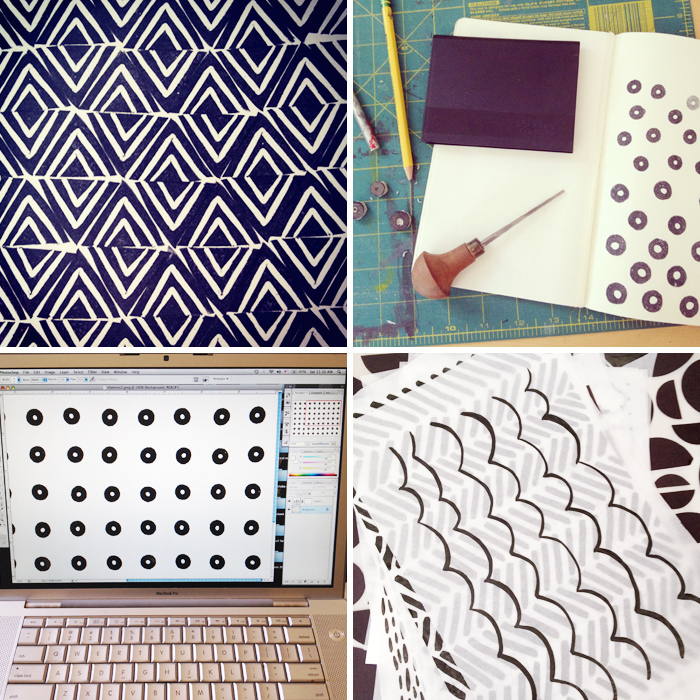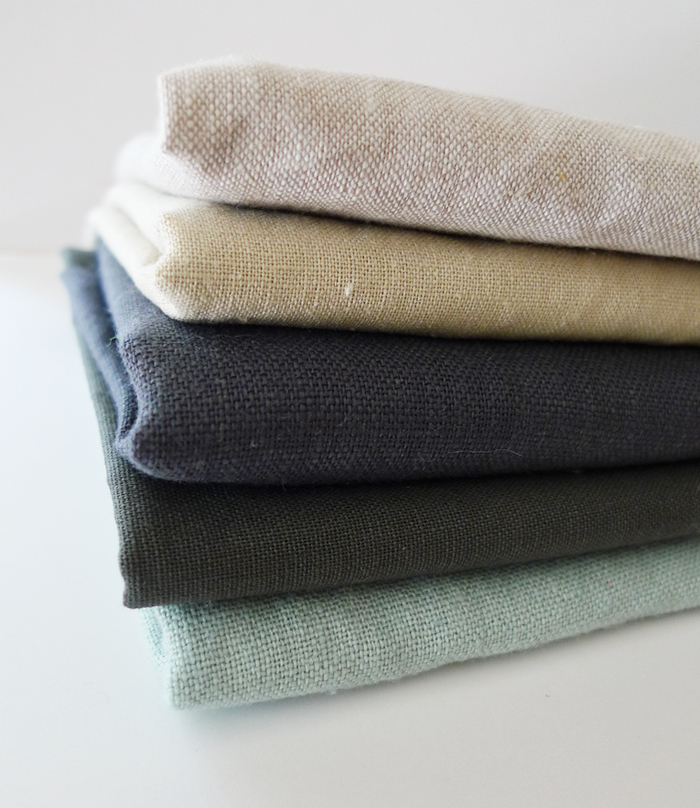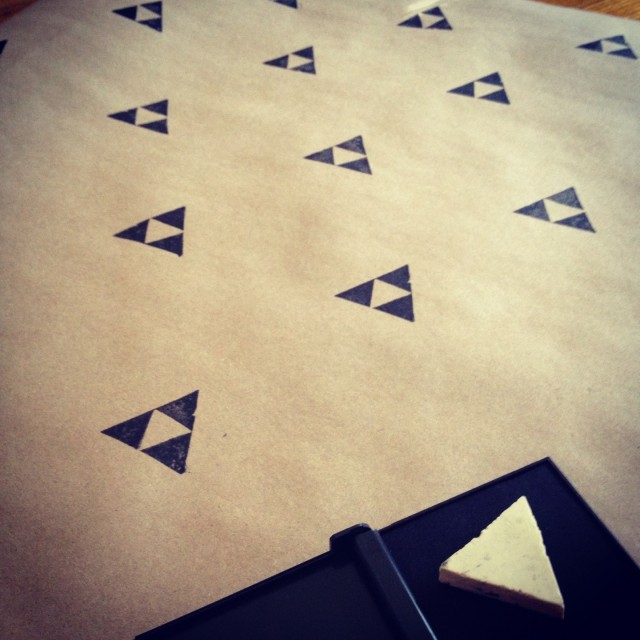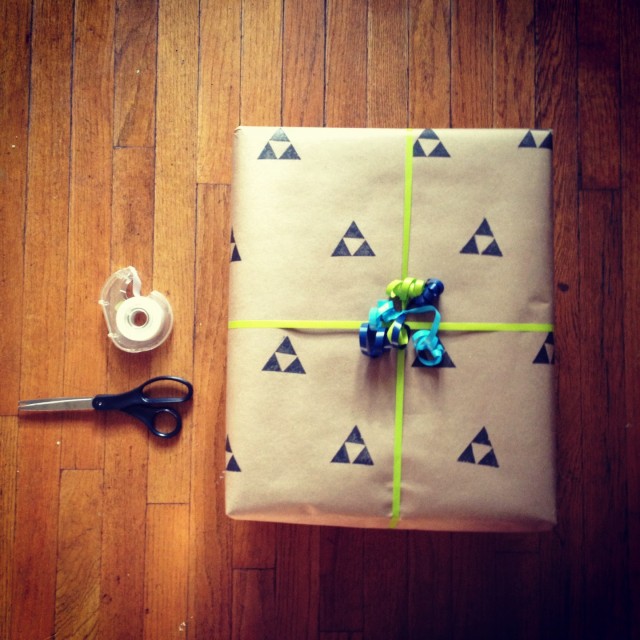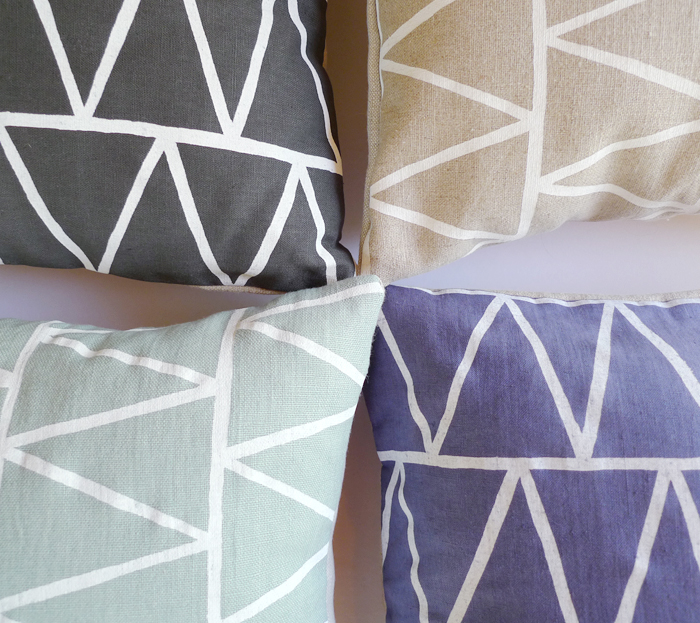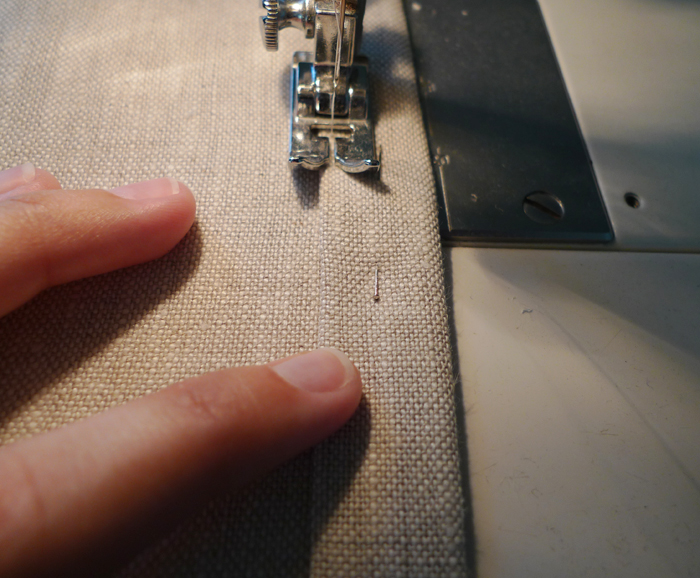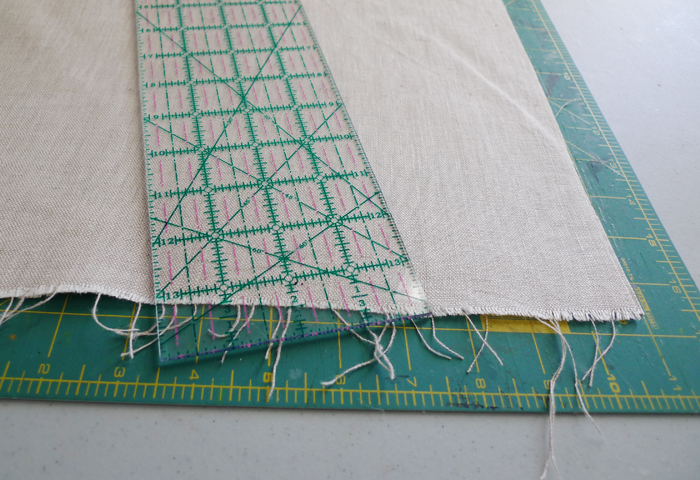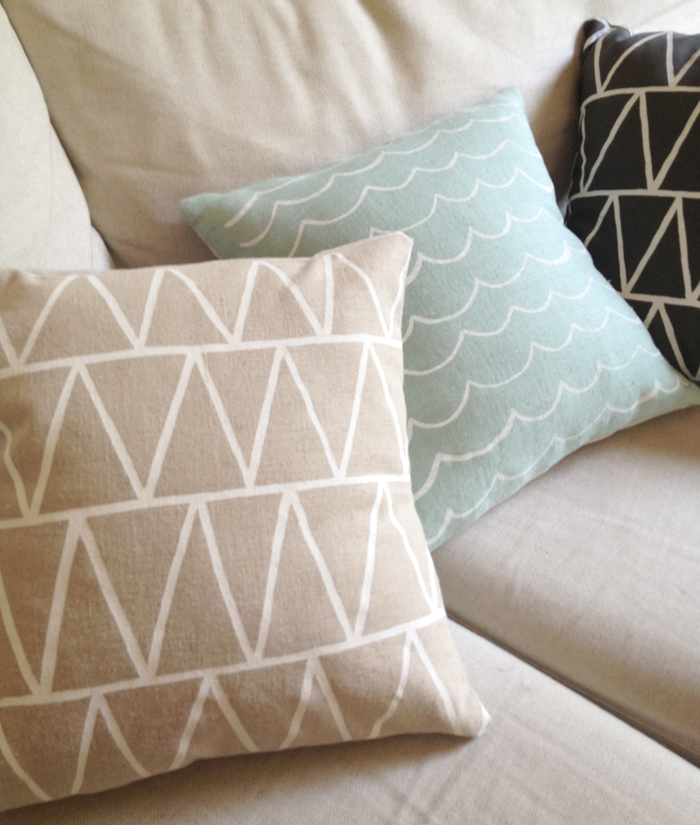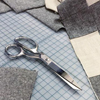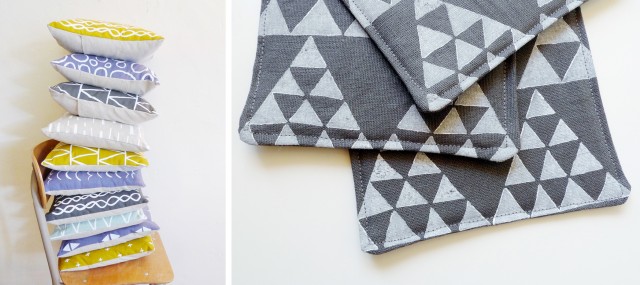 Cotton & Flax is a line of handmade textiles, all of which are sewn and printed by hand. I take great pride in this fact, because I am all too familiar with the long hours and specialized skills required to complete a project like this without outsourcing any part of the production. But I find that people often ask me, “What does ‘printed by hand’ really mean?” I’d love to share some insights into what hand-printing textiles is all about.
Cotton & Flax is a line of handmade textiles, all of which are sewn and printed by hand. I take great pride in this fact, because I am all too familiar with the long hours and specialized skills required to complete a project like this without outsourcing any part of the production. But I find that people often ask me, “What does ‘printed by hand’ really mean?” I’d love to share some insights into what hand-printing textiles is all about.
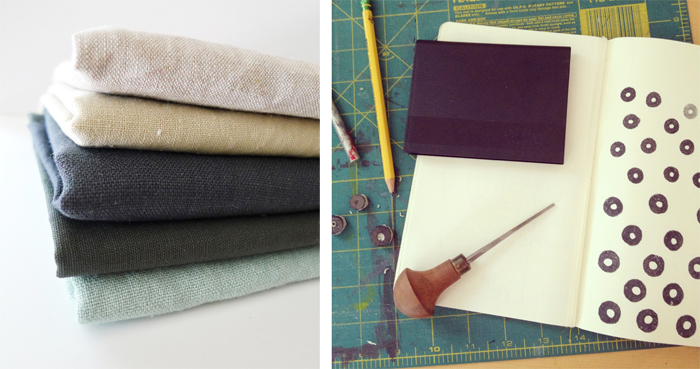 My textiles begin their lives as simple, natural fabrics, like linen or cotton, which are all prewashed. The process of designing a pattern takes a long time, as my patterns often start in my sketch book, then go through several revisions before I land on the final design. Even my pattern designs are made by hand, often using pen and ink, or a hand carved stamp which I will use to create a repeat pattern.
My textiles begin their lives as simple, natural fabrics, like linen or cotton, which are all prewashed. The process of designing a pattern takes a long time, as my patterns often start in my sketch book, then go through several revisions before I land on the final design. Even my pattern designs are made by hand, often using pen and ink, or a hand carved stamp which I will use to create a repeat pattern.
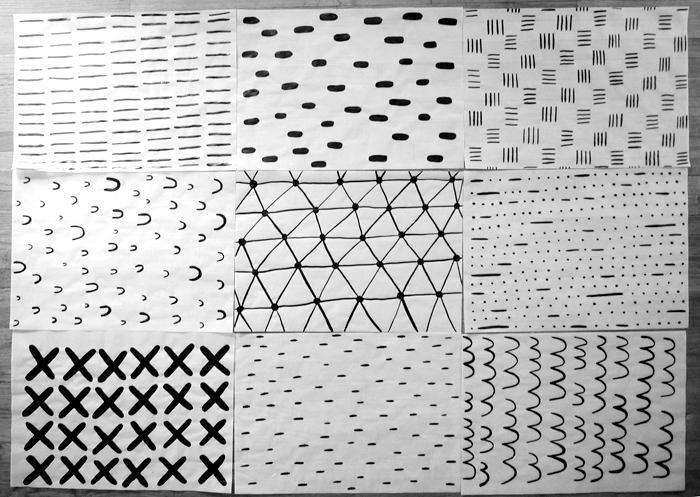 After I finalize a pattern design, I use a transparency of that design to create a silkscreen, which I can use to reproduce larger repeat patterns onto my fabrics. In large textile factories, these screens can be big, sometimes up to 5 feet across (you can see some in the Marimekko factory video I featured a while back). Since I work in a small studio space, I had to get a bit creative on how to print my fabrics. I don’t print the full width of the bolt of fabric, since that would require a much larger workspace. Rather, I print smaller sections cut to the exact size of my pillows and tea towels, so there is very little (often no) waste fabric when I begin the sewing process.
After I finalize a pattern design, I use a transparency of that design to create a silkscreen, which I can use to reproduce larger repeat patterns onto my fabrics. In large textile factories, these screens can be big, sometimes up to 5 feet across (you can see some in the Marimekko factory video I featured a while back). Since I work in a small studio space, I had to get a bit creative on how to print my fabrics. I don’t print the full width of the bolt of fabric, since that would require a much larger workspace. Rather, I print smaller sections cut to the exact size of my pillows and tea towels, so there is very little (often no) waste fabric when I begin the sewing process.
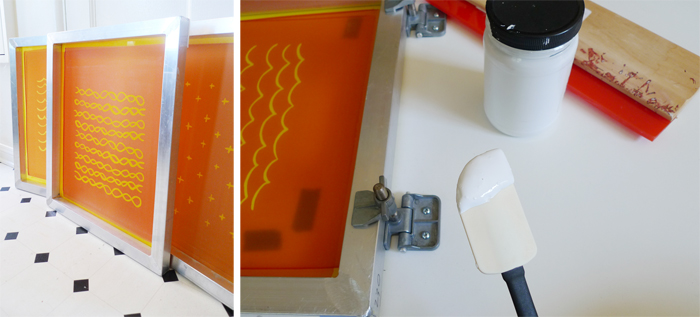 The printing itself is my favorite part of the process. I have so many fond memories of printing over the years, and have come to love the small details that are unique to this process: the smell of the ink; the squeak of the silkscreen squeegee as it pulls across the screen, flooding it with ink; the subtle pop of the screen as it pulls away from the fabric after a successful ink impression has been made. I hope to share more about the details of printmaking processes soon, I hope you’ll find them as charming as I do.
The printing itself is my favorite part of the process. I have so many fond memories of printing over the years, and have come to love the small details that are unique to this process: the smell of the ink; the squeak of the silkscreen squeegee as it pulls across the screen, flooding it with ink; the subtle pop of the screen as it pulls away from the fabric after a successful ink impression has been made. I hope to share more about the details of printmaking processes soon, I hope you’ll find them as charming as I do.
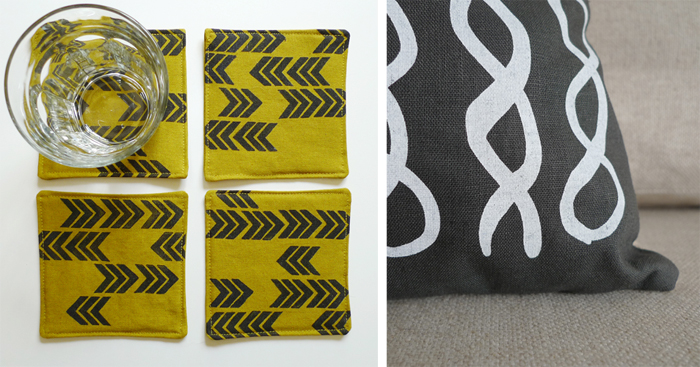 But the best part of hand-printed fabric is the tactile quality it provides, and the bold opaque quality that the ink imparts on the fabric. To date, I have yet to see a piece of digitally printed fabric that can compete with a silkscreen fabric’s boldness and quality of line. Hand-printed fabric requires a level of physical labor that isn’t required of digital printmaking, but I find that the extra effort creates a striking product that is rich in tradition and history.
But the best part of hand-printed fabric is the tactile quality it provides, and the bold opaque quality that the ink imparts on the fabric. To date, I have yet to see a piece of digitally printed fabric that can compete with a silkscreen fabric’s boldness and quality of line. Hand-printed fabric requires a level of physical labor that isn’t required of digital printmaking, but I find that the extra effort creates a striking product that is rich in tradition and history.

